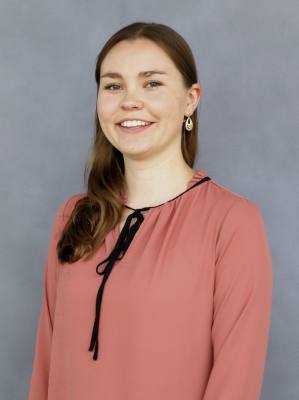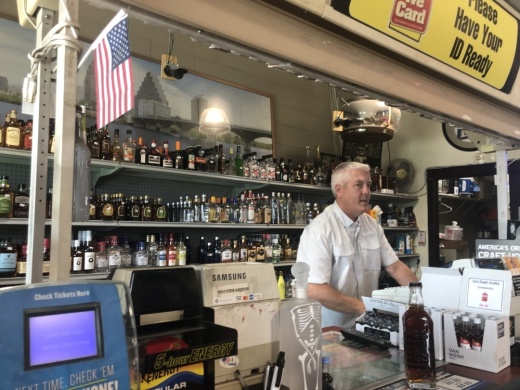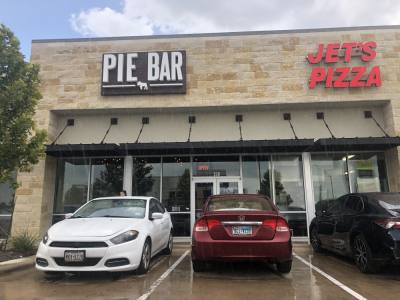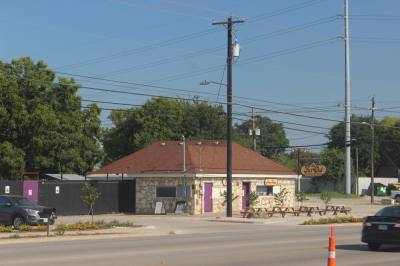Several new shopping centers and apartment buildings are popping up in 2021. Darin Dement said he still remembers when the area was mostly greenery.
Dement runs the cash register at the South Austin liquor store he owns and that his parents opened in 1984.
On the wall behind the register, a poster of the Austin skyline from the 1980s shows the drastic changes Dement has noted downtown.
“There was nothing out here at that time,” said Dement, a third-generation Austinite who runs Hillside Liquor.
His parents opened the shop off of South Congress on what is now Ralph Ablanedo Drive 37 years ago.
Dement’s parents would swing open the shop’s doors and listen to concerts at the old Southpark Meadows Amphitheater.
Dement, who moved the shop to 160 W. Slaughter Lane in 1997, said growth has accelerated along the South Congress corridor between Slaughter and William Cannon in the last three or so years like never before.
“I think the genie’s already out of the bottle as far as maintaining its small-town feel—we’re past that point,” Dement said. “But I hope it keeps some of its character.”
Booming business
Lawrence Boone, who books bands for the Far Out Lounge and Stage on South Congress, thinks it is ironic that the shopping center coming up across the street is called Oaks at Slaughter because its construction meant taking down most of the parcel’s trees.
Boone said he is not against it, though. He said he believes the 108-room proposed hotel in the shopping center might make the Far Out more tourist-oriented, but it will bring business.
“Right before our eyes [this area] is being developed, and a lot of it is going to be beneficial for this part of our town,” Boone said.
The Far Out Lounge itself is new, though part of the building has been standing since 1908. The outdoor stages, surrounded by picnic tables and five permanent food trucks, host bands across the genre spectrum.
Kerry Richardson started another of the corridor’s local watering holes, Last Stand Brewing Co., which opened in October 2020.
Starting in 2017, Richardson was looking for a second location for his brewery, established two years prior on Pauls Valley Road in far Southwest Austin. Richardson’s business partner, Jim Sampson, stumbled upon a just-opened shopping center on South Congress, The Collective.
The brewery opened in that shopping center four months after H-E-B opened its 8801 S. Congress Ave. location. South Congress Station, a shopping center across from the grocery store, opened this spring.
The Oaks at Slaughter shopping center set to open in November is also an effect of H-E-B’s opening, said Milo Burdette, vice president of real estate and development company Barshop & Oles.
“We know if they’re there, it’s going to be a good place where other restaurants and retailers will want to be,” Burdette said.
While development has brought opportunity for some, Dement said businesses also face rising costs.
“I hope businesses like mine that have been here for a long time—local independent businesses—can survive,” Dement said. “We’ve always had cool funky music venues. I hope we can maintain that.”
Making SoCo home
When Council Member Vanessa Fuentes thinks of the southernmost South Congress corridor in her district, she said she thinks of displacement, both of residents priced out and of those moving to the area to flee the growing expense deeper into the city.
“Particularly in our Latino community, we’ve been pushed farther and farther out of the city,” Fuentes said.
For some Austinites, areas such as the most southern stretch of South Congress used to be considered far from downtown but now seem like more affordable options to stay in the city proper, Fuentes said.
“Many in our community are welcoming of this growth because it brings amenities, but on the flip side, as we grow as a city we need to make sure no one gets left behind,” Fuentes said.
Fuentes said apartments are spurring residential growth. The Martingale apartments will bring 270 units this fall. Across the street stands the Windsor South Congress complex, which opened in 2021 with 308 units.
The Orange Line, a light-rail transit corridor, could flow through this stretch of South Congress in coming years, but it is set for a later stage in Capital Metro’s Project Connect, Fuentes said.
The initial Project Connect Orange Line investment includes light rail along South Congress but stops 2 miles north of Slaughter, Capital Metro spokesperson Jenna Maxfield said.
Fuentes said there is still a risk the Orange Line construction will not get enough funding to reach the far south stretch of South Congress, though she considers the line crucial to connecting the community to other parts of the city.
Fuentes also pointed to an affordable housing complex, although a timeline has not been set. The city has already acquired land adjacent to the substandard Cullen Lane, where there is now a makeshift homeless encampment. Fuentes said improvements to the road will come first, but the city has not set a timeline for constructing the development.
Growing pains
As Fuentes advocates for new infrastructure, she said she hopes growth will not change the “heart and soul” of far South Congress.
She said that soul is defined by live music, funky hole-in-the-wall venues, outdoor activities and friendliness.
Longtime area resident Susan Hambright, director of the Park Ridge HOA, said each local business setting up shop around her neighborhood has brought her a sigh of relief. They make the corridor feel more like a united community than a disjointed satellite of downtown, she said.
She has served on her HOA’s board for 17 years. One of the neighborhood’s seemingly unending battles was to keep fast-food restaurants from filling the area.
“The Far Out is a really, really cool neighborhood venue,” Hambright said. “All of us walk down there and ride our bikes. They employ local musicians, and they’ve made it just a place to come hang out.”
For Dement, the growth has been good for business but also pushed him out of the city. He said he has lived in what he calls “no man’s land,” close to Driftwood, since the 2000s.
“It’s one thing to have a business in it, and it’s another to live in it and drive in it,” Dement said.
Boone still lives off South Congress. He said he sees pros and cons of “downtown stretching this way.”
“We love the city of Austin—we love the live music scene, and it’s something we want to continue to have in this city so our kids and their kids’ kids will get a taste of what we love so much,” Boone said. “I see myself as a cog in the machine. I’m doing it because someone did it before me, and I thought it was really cool.”








